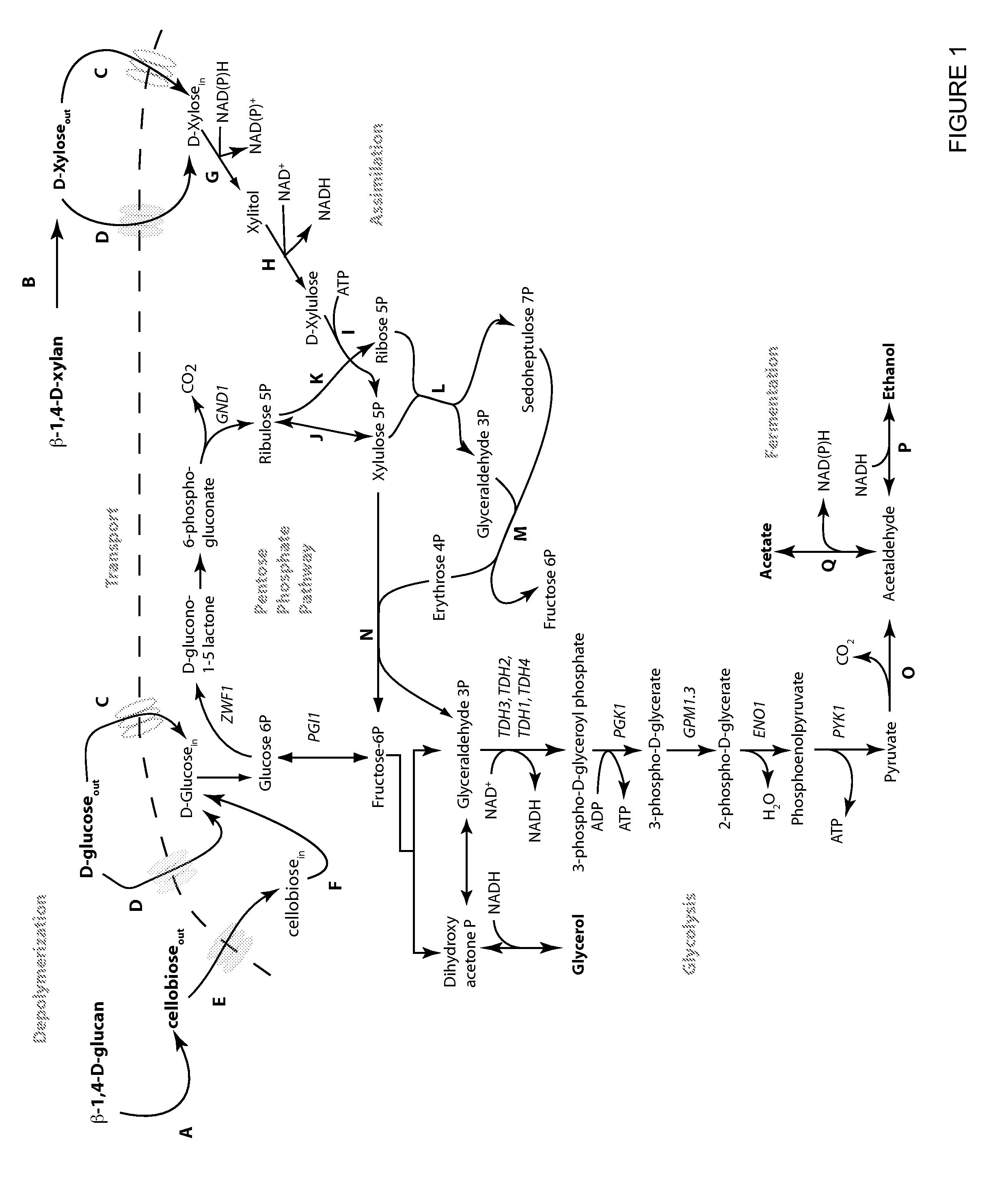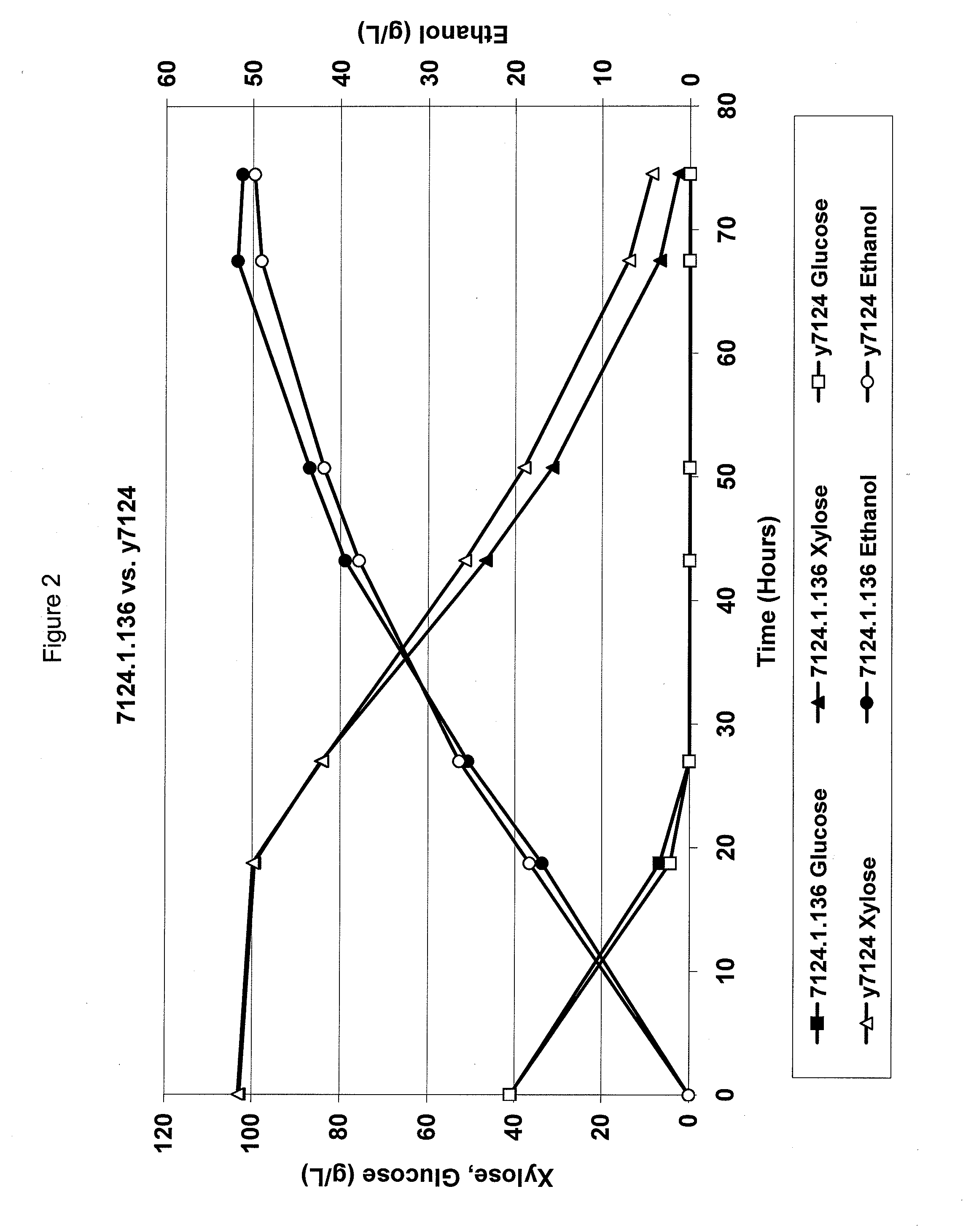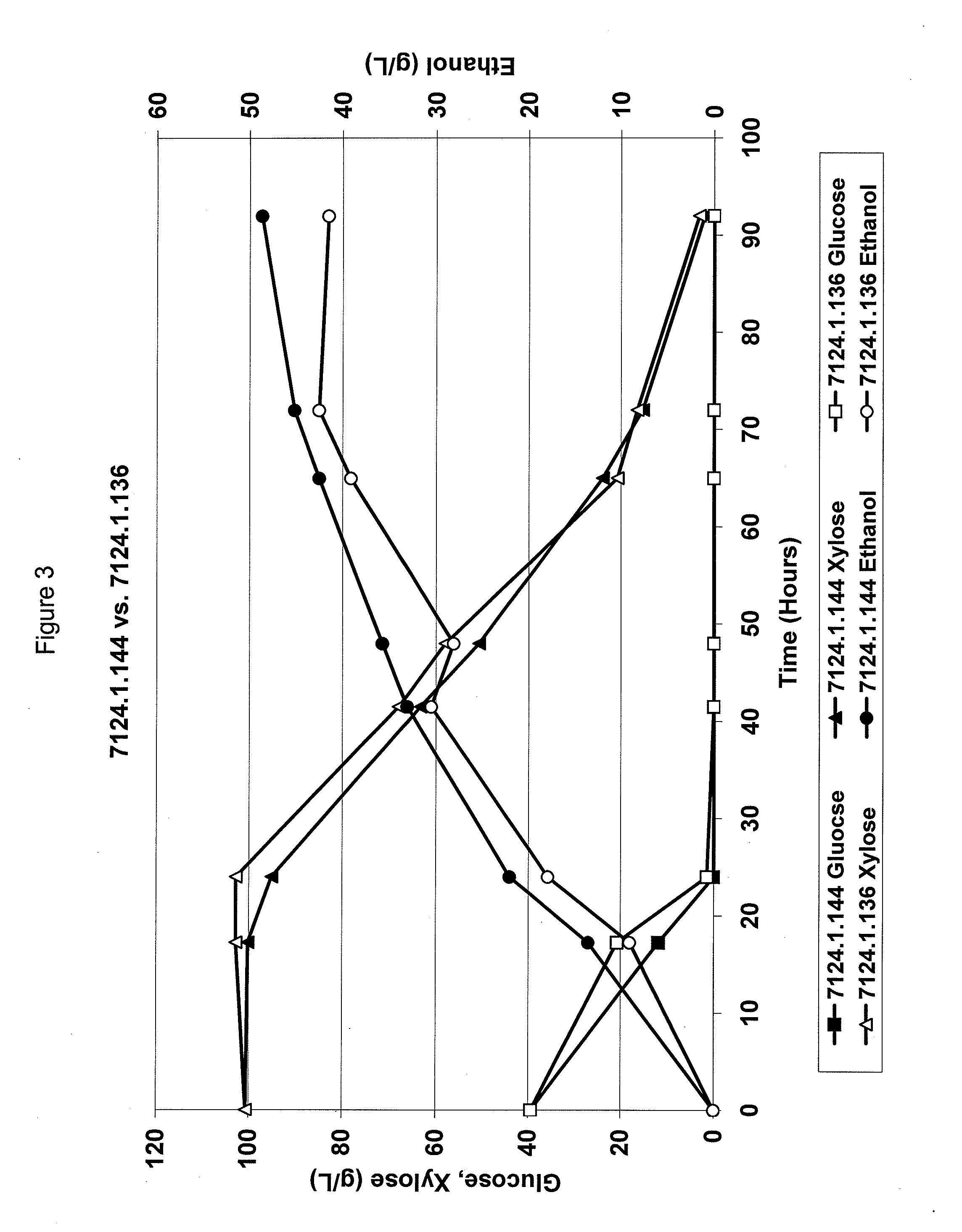Metabolically engineered yeasts for the production of ethanol and other products from xylose and cellobiose
- Summary
- Abstract
- Description
- Claims
- Application Information
AI Technical Summary
Benefits of technology
Problems solved by technology
Method used
Image
Examples
example 1
Production of Yeast Cells that Produce High Levels of Ethanol
[0246]A modified defined minimal medium was used containing trace metal elements and vitamins, which is based on that described by Verduyn et al. (10) It had the following composition: 1.9 g urea 1−1; 5.2 g peptone 1−1; 14.4 g KH2PO4 1−1; 0.5 g MgSO4.7H2O 1−1; 4 ml trace element solution 1−1; 2 ml vitamin solution 1−1; and 0.05 ml antifoam 289 (Sigma A-8436) 1−1. Glucose and xylose concentrations were varied in some experiments.
[0247]A synthetic NAT1 gene was fused to the P. stipitis ACB2 promoter and terminator, and LoxP sites flanked the entire cassette, facilitating removal using cre recombinase following single or repeated transformations and excisions of the selectable marker (Jose M. Laplaza and T. W. Jeffries, U.S. Pat. No. 7,501,275 B2; Laplaza, et. al, 2006, Enzyme & Microbial Tech, 38:741-747) (7). The NAT1 gene could be removed by transforming the transformants with approximately 10 μg of pJML545, which encodes ...
example 2
Construction of Strain 7124.2.541
[0320]pMA300 was constructed to contain the promoter, coding sequence, and terminator for the P. stipitis TAL1 gene, and the promoter, coding sequence, and terminator for the P. stipitis TKT1 gene. Approximately 100 μg of plasmid was linearized using the restriction enzyme ApaLI, ethanol precipitated, resuspended in water, creating a fragment that could be directly inserted into the P. stipitis genome. The digested construct was then transformed into 7124.2.344 using a LiAc protocol (Gietz & Woods, 2002, Methods Enzymol 350, 87-98), thereby creating 7124.2.541.
[0321]Transformants were selected via growth on YPD plates containing 50 μg / ml nourseothricin and dextrose (2%). Colonies were grown overnight in YPD+50 μg / ml nourseothricin liquid medium.
[0322]The NAT1 gene was removed by transforming the transformants with approximately 10 μg of pJML545 (Jose M. Laplaza and T. W. Jeffries, U.S. Pat. No. 7,501,275 B2; Laplaza, et. al, 2006, Enzyme & Micro Tech...
example 3
Construction of Strains 7124.2.535 Through 7124.2.539
[0326]Strains 7124.2.535 through 7124.2.539 were created by transforming 7124.2.418 with digested pSDM29. pSDM29 was constructed to contain the P. stipitis TDH3 promoter, sSUT4 coding sequence, and P. stipitis SUT4 terminator. Approximately 100 μg of plasmid was linearized using the restriction enzymes NotI and KpnI, ethanol precipitated, resuspended in water, creating a fragment that could be directly inserted into the P. stipitis genome. The digested construct was then transformed into 7124.2.418 using a LiAc protocol (Gietz & Woods, 2002, Methods Enzymol 350, 87-98), thereby creating 7124.2.535 and 7124.2.538.
[0327]Transformants were selected via growth on YPD plates containing 50 μg / ml nourseothricin and dextrose (2%). Colonies were grown overnight in YPD+50 μg / ml nourseothricin liquid medium.
[0328]The NAT1 gene was removed by transforming the transformants with approximately 10 μg of pJML545 (Jose M. Laplaza and T. W. Jeffrie...
PUM
| Property | Measurement | Unit |
|---|---|---|
| Fraction | aaaaa | aaaaa |
| Temperature | aaaaa | aaaaa |
| Volume | aaaaa | aaaaa |
Abstract
Description
Claims
Application Information
 Login to View More
Login to View More - R&D
- Intellectual Property
- Life Sciences
- Materials
- Tech Scout
- Unparalleled Data Quality
- Higher Quality Content
- 60% Fewer Hallucinations
Browse by: Latest US Patents, China's latest patents, Technical Efficacy Thesaurus, Application Domain, Technology Topic, Popular Technical Reports.
© 2025 PatSnap. All rights reserved.Legal|Privacy policy|Modern Slavery Act Transparency Statement|Sitemap|About US| Contact US: help@patsnap.com



